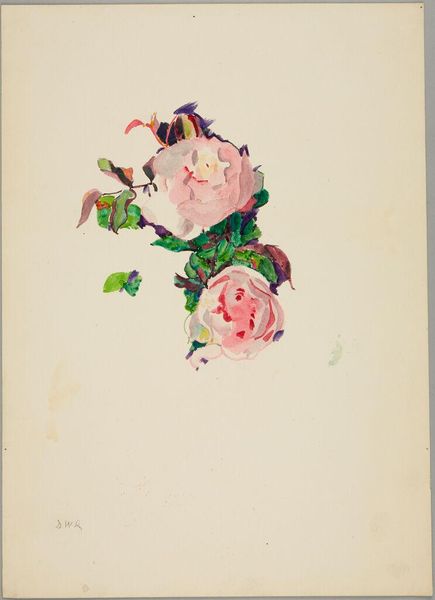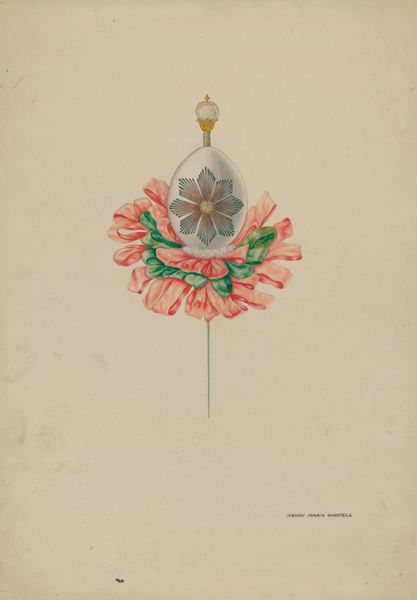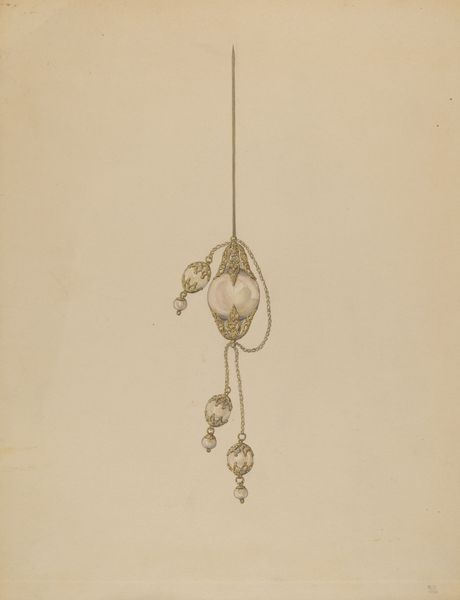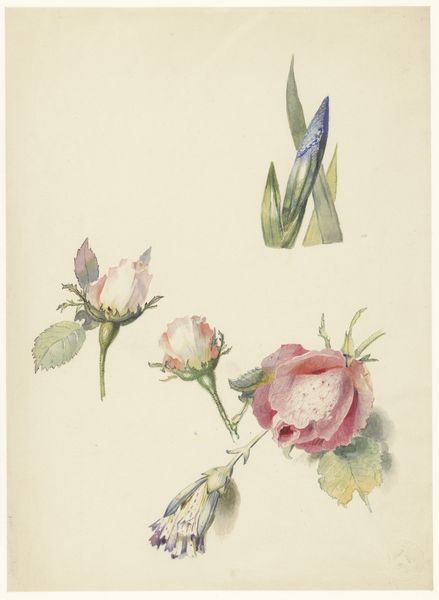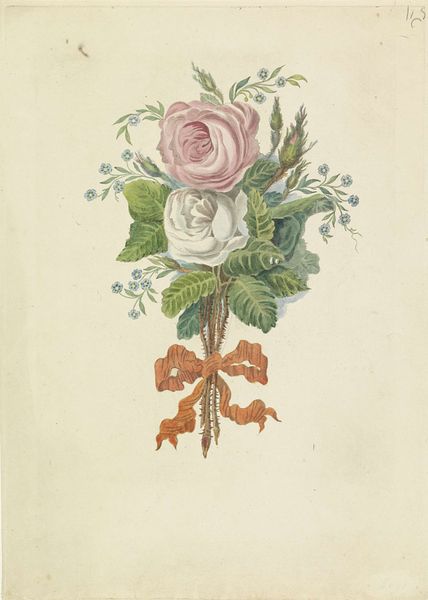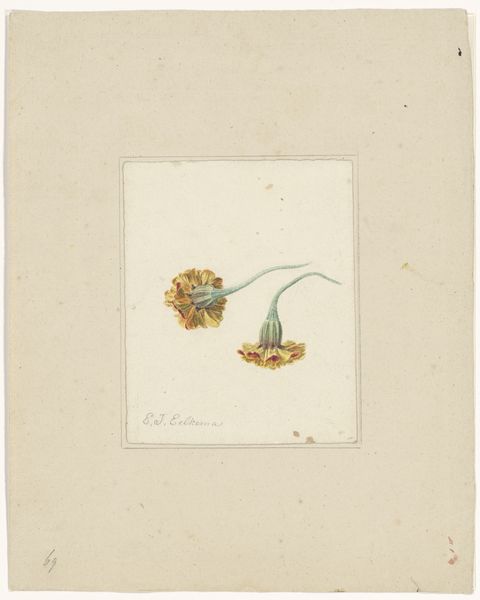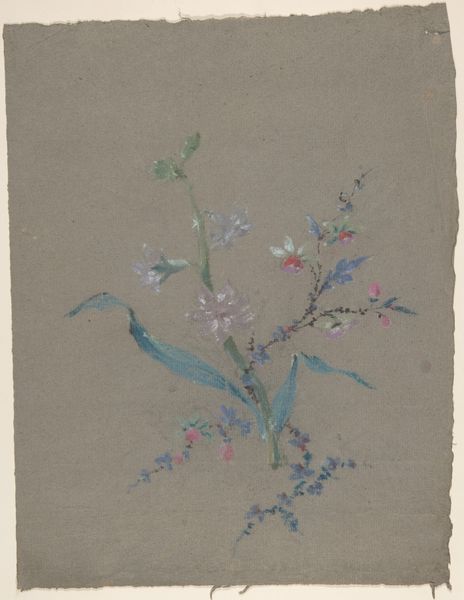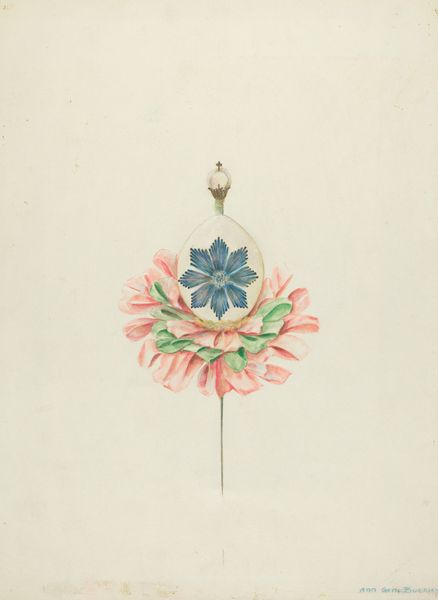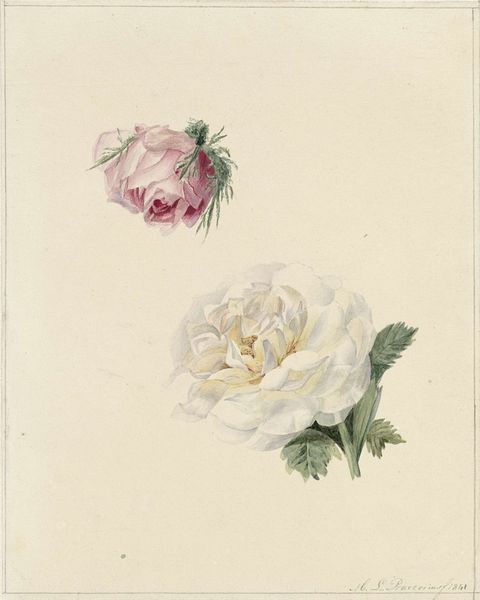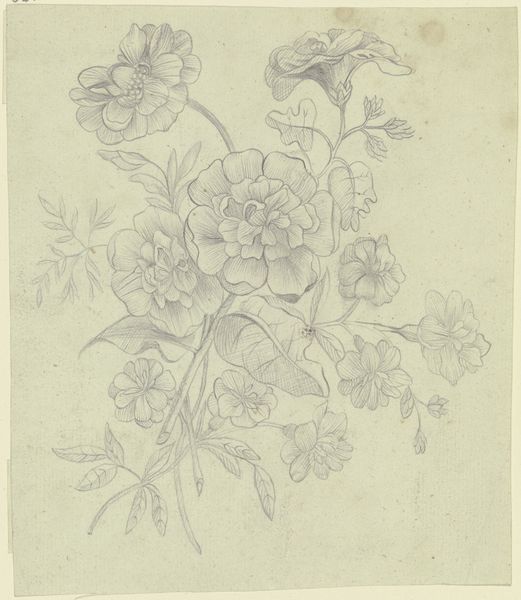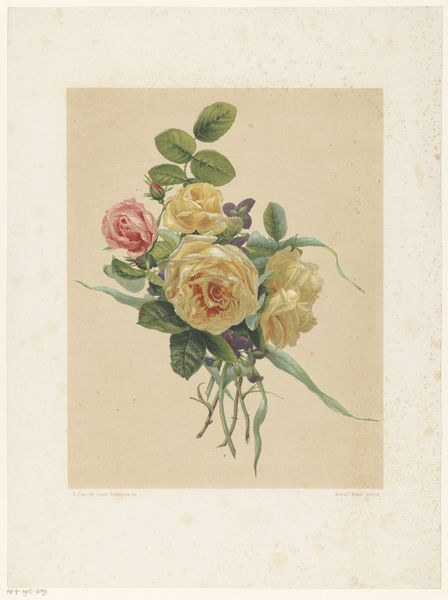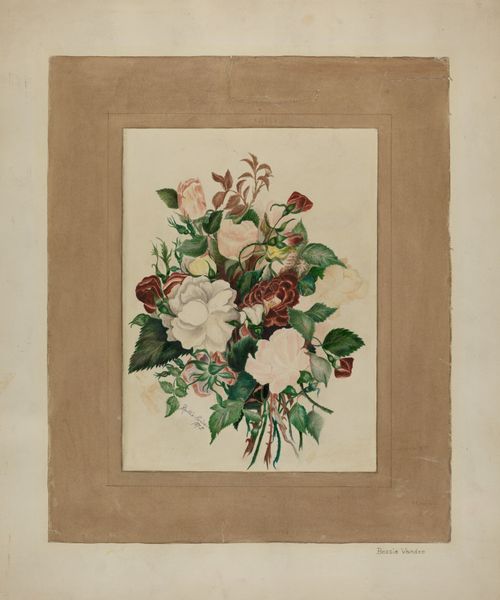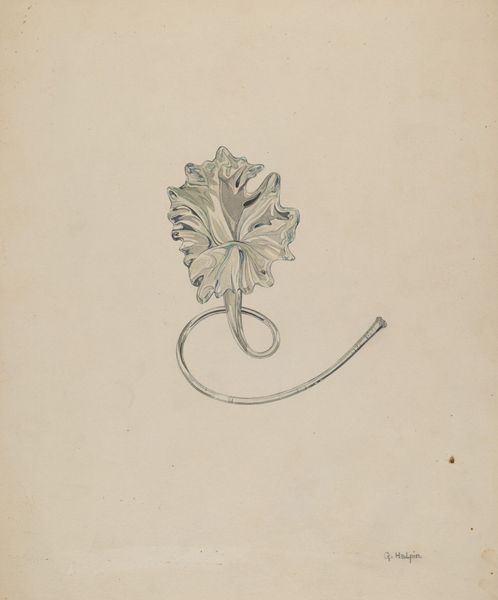
#
toned paper
#
water colours
#
possibly oil pastel
#
personal sketchbook
#
coloured pencil
#
underpainting
#
pastel chalk drawing
#
watercolour bleed
#
watercolour illustration
#
watercolor
Dimensions: height 101 mm, width 84 mm
Copyright: Rijks Museum: Open Domain
Henri Cameré created these two designs for brooches with a fruit garland in watercolor and graphite. Consider the fruit garland motif. Here, it suggests bounty and beauty, drawing from classical traditions where garlands celebrated feasts and seasonal abundance. This motif isn't isolated to mere decoration. Think back to the Renaissance, with its resurgent interest in antiquity. Artists like Botticelli, in his "Primavera," employed floral adornments to invoke ideas of fertility and renewal, concepts deeply rooted in ancient fertility rites. The garland's inherent cyclical shape symbolizes continuity and the eternal return. Throughout centuries, this symbol has resurfaced in paintings, tapestries, and even jewelry. It serves as a reminder that artistic expression transcends time, subconsciously echoing earlier visual vocabularies, and continuously evolving. The fruit garland engages our collective memory, connecting us to the past while resonating in the present.
Comments
rijksmuseum about 2 years ago
⋮
Naturalistic jewellery with recognizable flowers and fruit was in vogue throughout the entire 19th century. The cultivation of exotic variants was a popular hobby among the well-to-do and, moreover, this type of jewellery was easy to wear from day to night. The design of these two bar brooches hardly differs. Cameré may have designed these brooches on commission; the one on the left was eventually accepted (accepté).
Join the conversation
Join millions of artists and users on Artera today and experience the ultimate creative platform.
